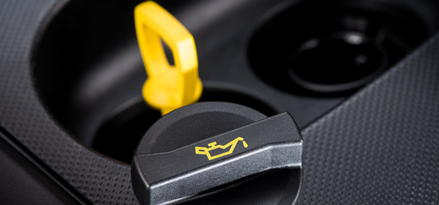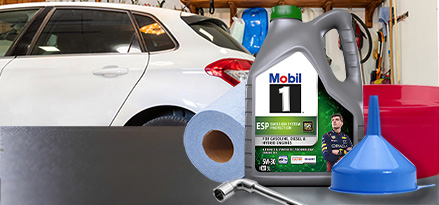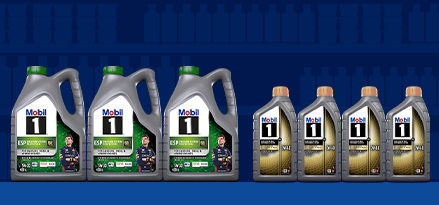When you get into your car, switching on your engine and getting ready to be on the move can happen without a second thought. But it’s your engine oil that keeps your engine performing smoothly. Your engine oil’s main job is to keep all the parts of your engine properly lubricated. However, after a certain time or after driving a lot impurities can build up in the oil affecting its performance and efficiency.
You can have your oil changed by a professional, or by doing it yourself at home, you can save on any associated oil change cost.

When should you change your engine oil?
How often you change your oil will depend on your car’s make, manufacture date and the mileage you’ve driven since your last oil change. It’s always best to check your vehicle’s manual. Remember to follow the guidance given, as if you put off changing your engine oil, your engine could become clogged or even damaged.
What do you need to change your engine oil?

When you're changing oil in your car, you’ll need a few items. First, the right engine oil for your vehicle is essential. You can use Mobil’s product selector to choose a suitable high grade engine oil.
You’ll also need a funnel, socket wrench, some old rags or newspaper, and a bucket or pan to catch the old engine oil in.
As part of this process, you should also change your engine oil filter at the same time. For this, you’ll just need an oil filter wrench and a high-quality oil filter that is suitable for your vehicle (refer to your vehicle’s manual for this).
How to change your engine oil: step-by-step

The first part of this process is to drain the old engine oil from your vehicle. You can do this by following these steps:
- Start your car and let it run for a couple of minutes, as this will warm up the engine oil for it to drain smoothly. Be careful not to run your car for too long - you don’t want the engine or oil to heat up too much, as this could risk burning you.
- Park your car on a flat surface where you have enough space, such as your driveway.
- You’ll need to then locate the oil pan and drain plug under your car. If you’re not sure how to find this, refer to your vehicle’s manual. Make sure your engine is cool enough to touch it before you touch the drain plug.
- If you can’t get under your car, you may need to use a jack. When using a jack, it’s essential you always use a jack stand for safety.
- Spread the old rags or newspaper out underneath the drain plug and put the pan or bucket below. You can then loosen the drain plug using the socket wrench.
- Slowly remove the plug and allow the engine oil to drain into the pan or bucket.
Once you’ve removed the old engine oil, you should replace the engine oil filter before adding the new engine oil. To do this, you’ll need to:

- Locate your car’s oil filter, which will also be underneath your vehicle. Again, if you’re unsure, you should refer to your vehicle’s manual.
- Make sure your pan or bucket is placed underneath the oil filter.
- Use the oil filter wrench to loosen the filter and then remove it.
- You should apply a little bit of engine oil to the new gasket before you install the new oil filter, as this prevents sticking or oil leaks.
- Now you can install your new oil filter and tighten it into place by hand.
With your old engine oil drained and your new filter in place, it’s time to add your new engine oil. For this part, you’ll need to:
- Find your oil filler cap and remove it. Your vehicle’s manual will help you locate this.
- Use a funnel to help you pour the right engine oil into the oil tank.
- Once you’ve finished pouring in the oil, put the oil cap back on and use an old rag or newspaper to wipe up any engine oil that’s spilled.
- Run your engine for a minute or two to give the new engine oil a chance to circulate throughout your engine.
- Turn off your engine and use your dipstick to check your engine oil level to make sure you’ve added enough of the new oil. Find out how to check your engine oil here.
- Finally, pour the old engine oil from the bucket or pan into a plastic bottle and put your old oil filter into a plastic bag. You can then recycle this oil by taking it to your nearest petrol station.

-

Mobil 1™
Our advanced range of synthetic technology engine oils helps provide outstanding engine protection against wear. Nothing works harder for your car.
More about Mobil 1™ -

Mobil Super™
Mobil Super™ offers a range of synthetic, semi-synthetic and conventional oils providing different levels of protection to match the conditions you face, whilst always ensuring you can drive with full confidence.
More about Mobil Super







